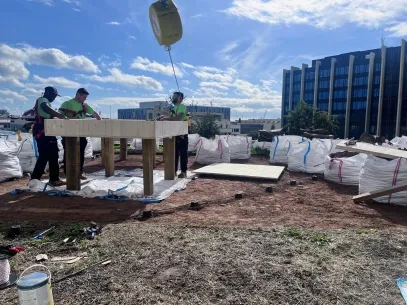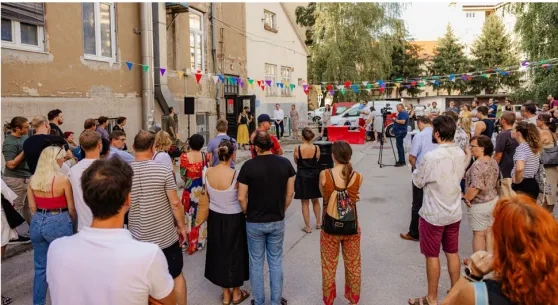AirQon Zoom-in 1: Not only for mobility purposes– towards the car as a service
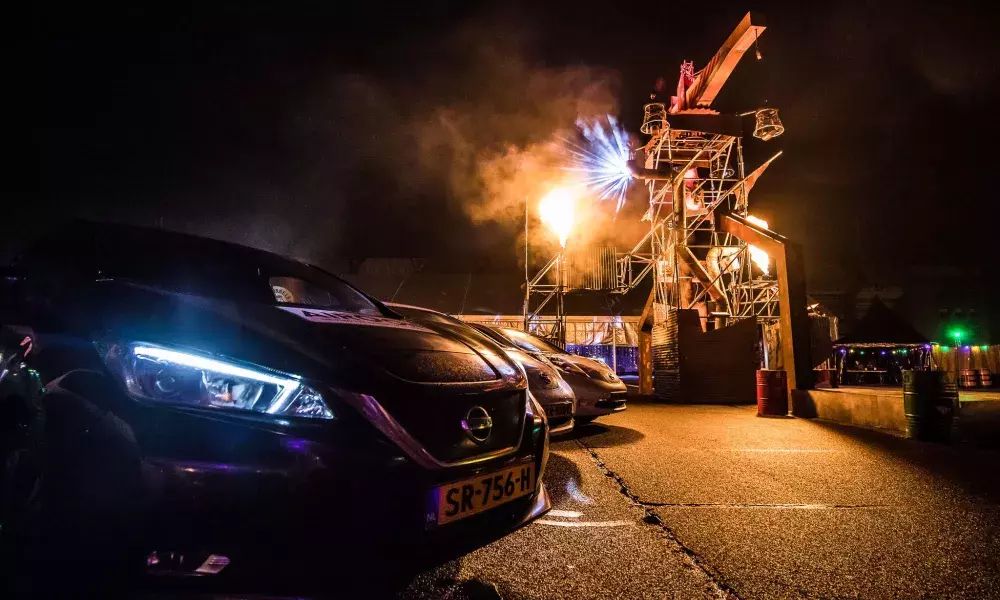
There are many alternatives available today in terms of electric mobility. The electric car makes its way at a very high speed in the world, economic ups and downs aside. According to the International Energy Agency (IEA), electric cars account for 2.6% of annual vehicle sales in the world and represents a 1% of the global car stock in 2019.
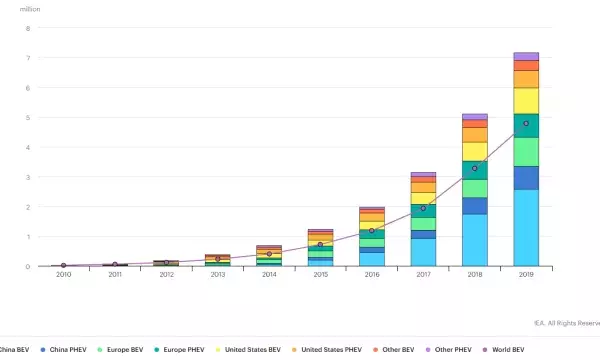
Annual electric vehicle sales in the world
Global car stock in 2019 electric powered
Using its battery as an energy resource is a promising, outstanding application of the electric car. They are the soul of the vehicle, and can be seen as a valuable, functional asset. Energy storage is a critical issue nowadays, but we are facing an increasing electric car stock year by year. Using these batteries allows customers to benefit from different energy prices by charging at night or using renewable energy to do so. At the same time, they can use them for self-consumption in times of high demand, avoiding the most expensive energy costs and collaborating with network operators in flattening the daily energy demand. According to IEA estimations, by 2030 this contribution of electric car batteries may represent up to about 10% of demand at peak times.
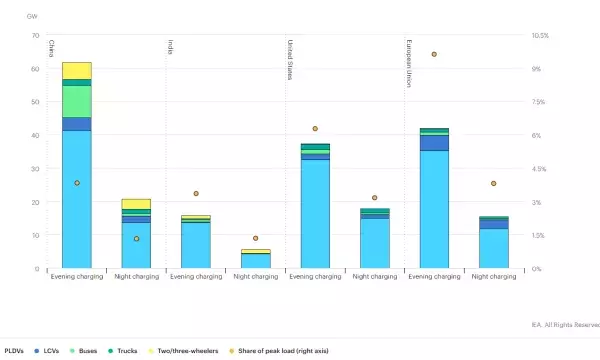
Contribution of electric car batteries at daily peak times by 2030
So far, there is a long way to go through but the electric car user normally approaches these technologies with interest, awareness of sustainability and innovative spirit. Moreover, AIRQON goes even further focusing on the social, collective impact of energy solutions instead of other means such as diesel generators to power consumption in temporary, off-grid uses, such as events or street markets. Therefore, AIRQON allows the use of electric cars as a safe, reliable energy source alternative to others resulting in local emissions.
AIRQON has a fundamental component in the involvement of end users, not only as the role of event organizers, which may be familiar with technical aspects like energy planning, but also as a basic energy provider. AIRQON requires a community for the maximum development of its potential, since it is a crowd-power solution. If there are not numerous, diverse users participating with their cars, it hardly will make sense.
This first Zoom-in brings together three of the agents managing assets that make a project like AIRQON possible: a car dealer, a fleet manager and a global energy manager. It is worth mentioning that the latter is a business that does not belong to the consortium, which provides an external vision of the project. All of them reflect a practical orientation in AIRQON, despite being an innovation project, and face trending issues related to electric mobility.
Firstly, the deployment of recharging infrastructures has always had to face the vicious circle of initially insufficient recharging demand, which slows down the implementation, respectively. This issue is inherent to the existence of electric cars. However, in a country like the Netherlands, hosting a 4% of the world's private chargers and 8% of the public conventional chargers according to IEA statistics, is this infrastructure enough? And if the use of the electric cars is diversified for purposes like AIRQON proposes?
Secondly, leasing is experiencing a dramatic growth in the weight of total car sales. This option, hitherto related to companies or professionals, is opening its way among private customers. According to the research report on the global car leasing market by Technavio, it is predicted to have an annual growth rate close to 14% in the period 2019-2023. So, the question here is: how does this impact on an initiative like AIRQON? Because, if I am not the owner of the car, may I take part on it?
And thirdly, and also related to this new paradigm brought by the success of leasing plans, there is the expansion of car sharing services, which are increasing rapidly, especially in cities, and not only on this means of transport. According to Deloitte, the estimation for 2020 is to reach more than 150,000 shared cars in Europe, serving a total community of more than 15 million users. It must be taken into account the wide availability of car sharing services, suitable for any distance and other mobility requirements.
This leads again to the same question: may I decide about using my car in AIRQON and benefit from that? What about the car sharing company and their business objectives? If we consider that vehicle-to-grid functionalities are implemented in the car by the manufacturer, as a default feature, the debate is even wider. At the end of the day, the car is perceived as a service, and under this consideration AIRQON comes to power events, what means, as a consequence, to enter in the field of power as a service.
The transition that mobility is experiencing is pointed in the Policy Note from the European project CIVITAS. From a dominant individual car ownership, we are moving towards a combination of owned, on-demand and shared means of transport, enabling more consumer choice options and shared economy conditions. And, in relation to all this, applications like the proposed ones in the AIRQON project are trending technical solutions ready to be used today.
Behind this there are electric cars continuously evolving, vehicle to grid technologies gaining maturity… So, the availability of technical solutions will be unstoppable, but, what about the consumers? And what about fleet managers, car sharing services or car dealers? Are they ready as well?
In these times of COVID-19, companies, public administration and citizens in general have been pushed to change the way we work. Digitalization allows us to virtually bring together part of the main actors that make AIRQON possible, related with end users in multiple ways with a common objective of boosting electric mobility and making events greener. Johan Janse, Director of Buurauto; Bart van der Born, Director of Leender van der Born Nissan dealer; and Jordi Leijnse, Consultant of JLC Duurzaamheid, let us have a zoom-in about the role electric mobility plays in this initiative and in their forthcoming trends.
What is Buurauto?
Buurauto is a shared car service provider that gives AIRQON the possibility to use the Buurauto fleet, which consist mostly out of Nissan Leaf cars. We have one of the biggest shared electric car fleets in the Netherlands. In fact, we have just become part of Mywheels, a fleet operator of shared vehicles, 150 of them electric, which is able to provide services to a community of up to 80,000 people.
What is Leendert Van Den Born?
We have been car dealers for more than 50 years, we have done everything on this business. We delivered the first Nissan Leaf in the Netherlands, and what I began to perceive in 2009 is happening right now. Most of my customers ask me lots of questions about electric cars. At present, they represent around 7% of the sales in the national market, so they are a very competitive option.
What is JLC Duurzaamheid?
We provide energy accounting services, mainly supporting municipalities, construction companies or event organizers. We help them to achieve sustainability goals in the energy supply. That means that we focus on how they fit demand at the same time they are financially responsible. The possibilities are endless, we are only starting.
You play very different roles, yet complementary.
Bart van der Born: Leendert van der Born started providing 20 electric cars to Breda Municipality’s fleet. Additionally, a Nissan Leaf and an electric van Nissan eNV200 are available for testing AIRQON functionalities. Apart from this, we can communicate with Nissan to have technical support, if needed. We are also committed to disseminate the project insights among our customers and to collect their impressions about it.
Johan Janse: Buurauto provides vehicles as well, but by means of a shared car service. That means, in other words, that we are a portal for everyone not only interested in using an electric vehicle, but also interested in using a car in a shared service. We think that sharing is caring for the environment.
Jordi Leijnse: JLC provides global energy solutions, including electric mobility, since it is one of the major questions of our target audience. We are partners with car dealers and renting services.
Jordi, you are an external partner of AIRQON; how is your experience on this initiative?
Jordi Leijnse: This is an opportunity for us to make sure that we are involved in the latest innovations, that we choose the best solutions for our customers. So, we are an early adopter of AIRQON, our customers are interested in it. Furthermore, this gives us the possibility to increase our target audience, thanks to the potential of this portable power supplier.
All of you are closely related to business models that move towards the electrification of transport, although each one focuses on different areas of the market. What is the perception of your customers about electric mobility?
Jordi Leijnse: Our customers demand solutions for off-grid uses, so we learn how to manage our electric car fleets as mobile battery packs. AIRQON lets any visitor or worker to move with the power source, or in other words, they are the power supply. This is optimal for most power demands, which are small, or are requested for short periods of time. There are a lot of technical options, but the hard part is to make them affordable.
Johan Janse: I am sure that electric mobility will be mainstream in a couple of years in the Netherlands. Recently, the impact of COVID‑19 contributed positively to decrease pollution, and electric cars reinforce this perception of blue skies that everyone wants in their cities. In this way, an initiative like AIRQON brings an added value, easy to relate to companies that are green in all the things they do, as for not using fossil fuels or plastics anymore. AIRQON supports our image as a leading company in sustainability. This is the reason why we are doing it. Through this, we hope to better achieve our goal: to increase the use of shared electric vehicles.
Bart van der Born: The growth in electric cars for businesses is also tax-driven. The government sees this as an investment in environment and strongly supports it. Therefore, this leads to these numbers: we sold 20 electric cars in 2018, and 250 in 2019. In addition to this, private owners receive a grant of 4,000 € for new and 2,000 € for second-hand electric cars. The Netherlands needs to meet CO2 regulations, and this makes electric driving a hot topic.
On the one hand, there are strong incentives for purchasing cars, but leasing plans are gaining presence all around the world, to the point that the role that vehicle ownership has from now on is seriously questioned. Bart, what is the role of car dealers against leasing companies on electric mobility in the Netherlands?
Bart van der Born: This is a good question, it is now happening. Private owners are switching to leasing plans, growing from 6% to 40% in only three years. The role of car dealers is changing, but we remain being the partner of private owners, like the shop where you come to see and choose the appropriate car for you. Moreover, this new wave of leasing is common for any kind of cars, but around 70% of electric cars are sold by lease plans. This encourages the switch to electromobility, helping the people to feel safer coming to this new product.
The development of electric mobility has always ended up facing the vicious circle of recharging infrastructures and the stock of cars but, actually, are there enough available charging infrastructures to support your activities? And if not, how could it be improved?
Jordi Leijnse: For now, I would say there are enough, but the growth of charging stations and the stock of electric cars mismatch. In the medium-long term, we definitely will have a problem. In this way, an additional public support could be done in the public domain with more flexible concessions. For example, we manage grid connections around the city for events, but if they are not taking place, we could deliver charging services in those sites, maximizing the feasibility of the business model for the good of the community.
Johan Janse: I think the Netherlands has the tensest situations in Europe with respect to this. If you look around a neighborhood, many houses have their own private charger, but there is an increasing pressure on public facilities. At the beginning, plug-in hybrid cars, with small batteries, occupied them, and now we are living a rapid increase in full electric cars. As far as around 70 to 80% of the people do not have a private parking facility at home, the pressure on the already scarce public space is increasingly becoming a problem. Nobody likes a charging space in front of its own door, unless they possess an electric vehicle. Anyway, there is an ambitious plan to implement more than a million public chargers by 2030, what means at the same time that new job opportunities will arise for technicians with appropriate skills to do so.
What are, in your opinion, the hot topics to be addressed for AIRQON to be a widespread solution?
Johan Janse: With regard to vehicle-to-grid (V2G) or, let’s say, vehicle-to-‘something’ like homes or off-grid applications, the technology is not mature enough. Only CHAdeMO protocol is being used, while CCS Combo, which is intended to be mainstream, has no developments available for those applications, and most car manufacturers are not showing any progress on this or have the feature disabled. Nonetheless, V2G has strong potential to support energy transition in Europe, because car batteries can play as manageable assets to achieve it, like a spread, decentralized power plant with huge total capacity. At the same time, guarantees are essential to ensure the owner that nothing will happen to its battery life, neither damaging nor shortening it by using charging-discharging functionalities.
Bart van der Born: This is very clear for me: if a functionality is in the car, you should be free to use it. Anyway, certification is a must, as in the case of public quick charge infrastructures. Specifically for V2G, Nissan has profoundly developed it as a feature of their cars, but it has to be in accordance to standards. This will make anyone free, for example, to share a car from Buurauto to go to an event, and to participate in AIRQON to power it. However, so far, AIRQON is an innovative test case, and insurances or guarantees are not fully applicable in the same way as for any standard charge. For us, the key of this project is to validate functionalities, while the car and the chargers’ technology is evolving in parallel.
Is AIRQON related to other innovative energy initiatives that you are carrying out?
Johan Janse: We have two very interesting examples. Firstly, in the Greenhooper project, we used electric cars to power a mobile information office, an energy-neutral tiny house. The aim is to show visitors that having an electric car is a valid solution to have your home powered independently from the grid, complementary to renewable generation on site. Secondly, in the DeeldeZon project, which is one of the first projects in the Netherlands implementing V2G functionalities in a broader scale, electric cars are able to store energy generated by photovoltaic solar panels installed on an adjacent building and bring it back to the building or inject it to the local distribution network, if needed. This helps to improve the feasibility of shared electric mobility services, which is a capital issue for Buurauto.
Jordi Leijnse: We combine on-grid and off-grid solutions to deliver energy as a service. And having this in mind, for us, the car is a service as well, and AIRQON expands the possibilities of the business models we perform, for example by avoiding direct pollutants like NOx.
Consequently, electric mobility is facing important challenges under a broad and multidisciplinary perspective. In AIRQON, how is this being addressed?
Bart van der Born: There is a wide variety of backgrounds merged together in the consortium. Some members have a technical profile, while others have a more practical vision. I am closest to the market and the end users. I know how customers think and feel. This is a challenging project, very energy-consuming, but it is really satisfying to be part of it. We need to get out of the box and find new energy solutions like AIRQON.
Johan Janse: Taking care of vehicles is a key issue, and the AIRQON device is a complex technical solution. However, in the end, it is essential to have a community open for this, since the power will come from participants. If you want to implement a solution like AIRQON, you have to focus on the public.
Bearing in mind that an active participation of end users is a fundamental issue, finally, what are your expectations about the future of the AIRQON solution?
Johan Janse: We have to stay focused on user engagement. Moreover, we have to be prepared to fail as well. In fact, failing has sometimes a better value than success. It is part of the learning process, even more in the case of innovation projects. For me, profitability is not an issue. You go to a festival to have a good experience and AIRQON will give a compensation. For this, Buurauto, as a fleet owner, is a facilitator. The added value is doing the right thing for your community, contribute to a more sustainable and healthy future for ourselves and our children.
Bart van der Born: We need wide standards for V2G, and if we had it, we would need a community using their cars. We need acceptance of this feature in the car. If people know this function, and it becomes normal, the participation will be easier, so dissemination is fundamental. Everyone involved with the environment will do it, electric driving is a very big thing. You can power an event in the same way you can power your house. I am sure the future will be like this.
In conclusion, the electric car is in the middle of a global revolution. Both companies and private users are switching to it pushed by their sustainable, smart features. Electric mobility solutions fit perfectly into shared services and their technology evolution is unstoppable. At the end, both shared car and car ownership options will be necessary. Indeed, having the widest variety of mobility solutions will be essential to meet any final user’s requirements and, consequently, to boost the overall electric car penetration in the market.
Nevertheless, despite of having world-class, outstanding numbers in the Netherlands, charging infrastructures are experiencing an dramatic, increasing pressure. Public support is then required for electric driving due to its strong contributions to the environment and their potential in creating new jobs and business opportunities for the local communities. In addition to this, innovative applications that turn the electric car into energy assets definitely expand its possibilities. This is exactly the context where AIRQON, a crowd-powered solution, is being built on.
About this resource
The Urban Innovative Actions (UIA) is a European Union initiative that provided funding to urban areas across Europe to test new and unproven solutions to urban challenges. The initiative had a total ERDF budget of €372 million for 2014-2020.
Similar content

